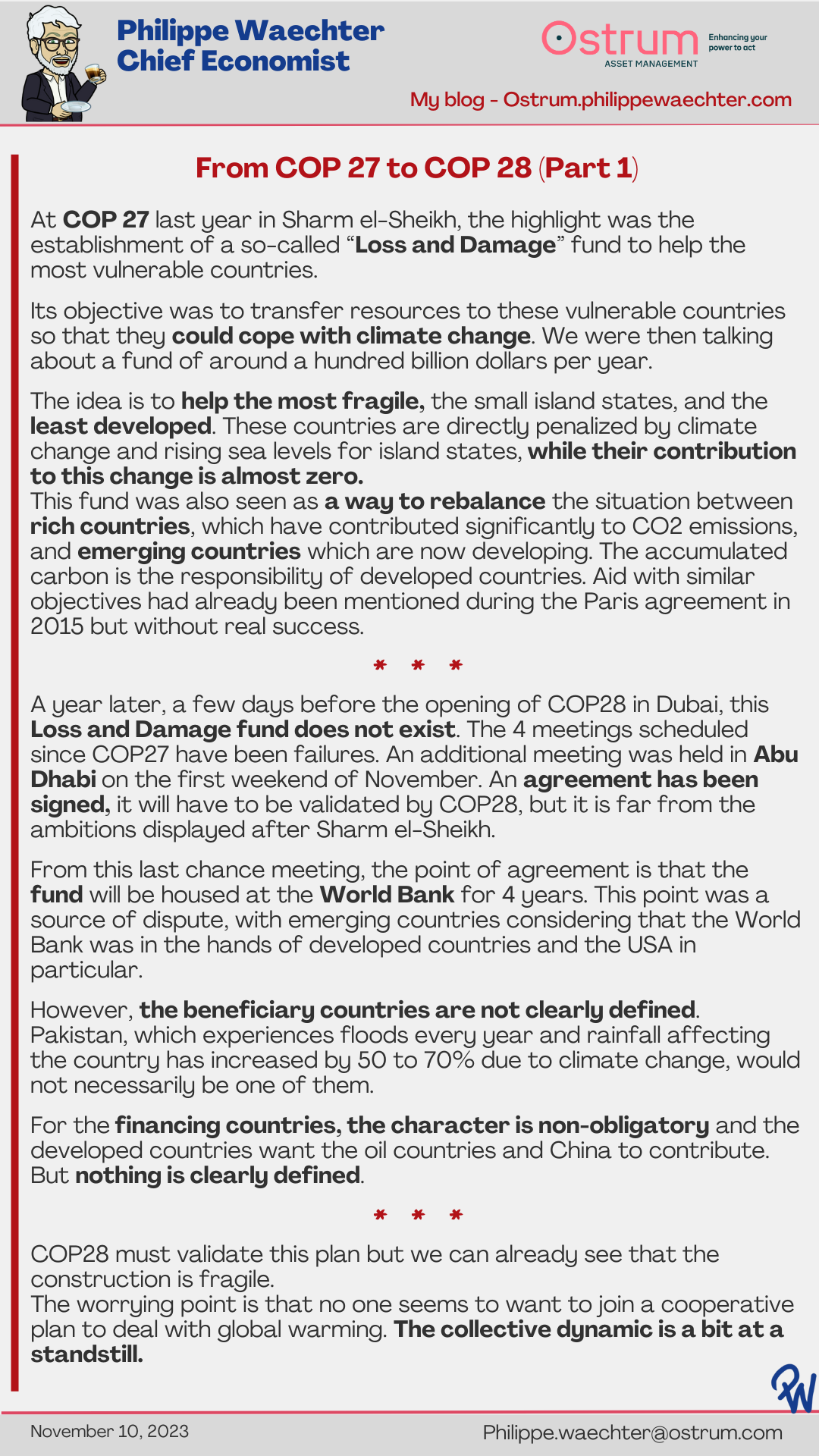At COP 27 last year in Sharm el-Sheikh, the highlight was the establishment of a so-called “Loss and Damage” fund to help the most vulnerable countries.
Its objective was to transfer resources to these vulnerable countries so that they could cope with climate change. We were then talking about a fund of around a hundred billion dollars per year.
The idea is to help the most fragile, the small island states, and the least developed. These countries are directly penalized by climate change and rising sea levels for island states, while their contribution to this change is almost zero.
This fund was also seen as a way to rebalance the situation between rich countries, which have contributed significantly to CO2 emissions, and emerging countries which are now developing. The accumulated carbon is the responsibility of developed countries. Aid with similar objectives had already been mentioned during the Paris agreement in 2015 but without real success.
A year later, a few days before the opening of COP28 in Dubai, this Loss and Damage fund does not exist. The 4 meetings scheduled since COP27 have been failures. An additional meeting was held in Abu Dhabi on the first weekend of November. , it will have to be validated by COP28, but it is far from the ambitions displayed after Sharm el-Sheikh.
From this last chance meeting, the point of agreement is that the fund will be housed at the World Bank for 4 years. This point was a source of dispute, with emerging countries considering that the World Bank was in the hands of developed countries and the USA in particular.
However, the beneficiary countries are not clearly defined. Pakistan, which experiences floods every year and rainfall affecting the country has increased by 50 to 70% due to climate change, would not necessarily be one of them.
For the financing countries, the character is non-obligatory and the developed countries want the oil countries and China to contribute. But nothing is clearly defined.
COP28 must validate this plan but we can already see that the construction is fragile. The worrying point is that no one seems to want to join a cooperative plan to deal with global warming. The collective dynamic is a bit at a standstill.




